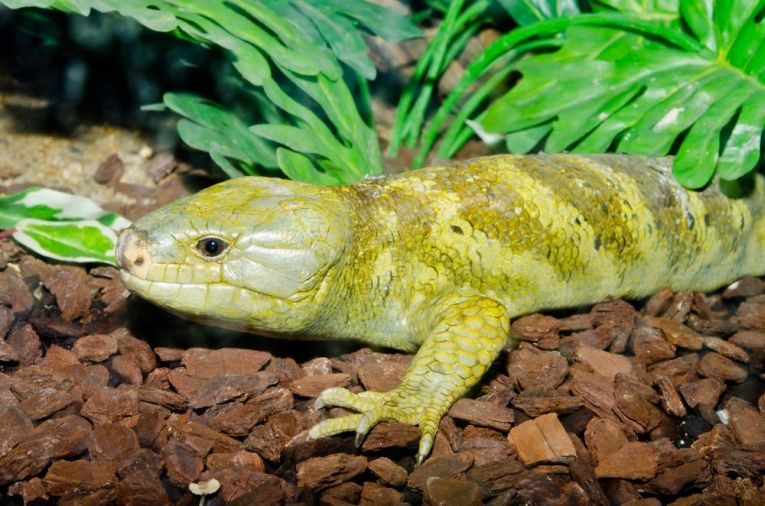The newest review of all snakes and lizards puts the cat snakes among the chameleons by resurrecting and inventing 5 sub-families at least! This gives us a chance to show off favourite molochs and boas until the cow-eating snakes come home!
The vertebrates have had time in this Class to experiment with the diverse form and habit of 9400 species. New species appear all the time, especially in "hot spots." The record of 168 new species was set in 2012, so this year we can expect at least a few. Antarctica lacks them, but almost every other piece of land or sea with a biome claims some representatives. The time has come to present the first morphological and molecular "phylogeny," according to Robert Alexander Pyron, Frank T. Burbrink and John J. Wiens from various US universities. They have published their tome in the BMC Evolutionary Biology journal.
In 10 years, debate has raged over a base consisting of Iguania and "the rest" or whether Iguania should go in with snakes and anguimorphs. As less than 200 species have been used in studies, it was time to enlarge the whole base (up to 4161 species). Various studies have lightened the load by looking at some major squamate groups.
This has led the current authors to include species from every family and sub-family. The approach used enables the discovery of novel relationships, which is where there will be criticism, of course! Despite that, most groups remain almost as they were on many recent studies. The only real problem would lie with fossils, as fossil families and even fossil species are omitted for the sake of brevity.
To start with, sister groups comprise skinks and a group the authors call episquamates. Lacertoiea (typical European lizards) form another grouping while anguimorphs, iguanians and snakes fall into a final group.
The Gekkota (basically geckos) include all those little wall-hanger species from Pachydactylus to Phyllodactylus. Love them or hate them, their niche is assured.
The skink groups make up 4 families (and not the 7 recently proposed), with the Scincidae themselves all related to each other. Corucia zebrata is illustrated at the top of this article because it is the largest living skink and, apart from its vegetarian diet, is also remarkable in forming social "circuli!"
The Lacertoidea contain American families in the monophyletic Gymnophthalmidae and the Teiidae, but the Teiids are kept as they were traditionally with the proviso that some groups must be rearranged. It is nice to see lacertids and amphisbaenids supported as a group again, with all the amphibaenids classed as relatives. These are the worm lizards, which people rarely see as they live underground. Highly endangered, their extinction could go unnoticed too! The Old World lacertids and many of their genera are also descended from a Lacerta-type ancestor.
The Anguimorpha have the anguids or slowworm family near the base. The anguids are highly diversified, with even more problems appearing than before in relationships between genera.
The Iguania are monophyletic but convergent evolution has clouded some issues by seeming to separate the pleurodont dentition of the American groupsand the acrodonts. The chameleons and agamids are sister groups, with all chameleons evolving from a common ancestor. Dwarf chameleons like Brookesia superciliaris and their relatives may be paraphyletic, but this seems unlikely according to a recent report. Just look at their universal characteristics to see the morphological point of view.

This is the tiniest tetrapod from Madagascar. A recently discovered chameleon, the Brookesia genus such as this B. superciliaris live among dead leaves; Brookesia image; Credit: © Shutterstock
The thorny moloch, Moloch horridus, and Chelosania spp. make some of the Agamids seem very diverse, but Australian groups seem among the most problematic (as well as interesting!) Agama and its relatives all have a common ancestor, but again they have diversified in some genera such as Japalura, which has three distantly related branches such as Pseudocalotes. Uromastyx is now regarded again as monophyletic, as it used to be.
And so to the serpents, which are also relatively unchanged in this study. Blindsnakes (known as Scolecophidia) are not monophyletic, but have evolved at separate times. The genus, Python, is a sister group to all other pythonids, with some previous pythons placed next to an Australian group including Apodora. The Boids are treated slightly differently here, with Calabaria to be given its own subfamily (Calabariinae) in the future.
The wonders of Madagascar's boine genera place them into a group close to Calabaria. That makes the Boinae paraphyletic or "multi-parented" if you like,, so another sub-family (or even a family) has been resurrected as the Sanziniinae.
The Boinae from Oceania and New Guinea caused a sister group of Boa and its relatives to be created. The Boinae then consist of only Boa, Corallus, Epicrtes and Eunectes.
The vipers and most colubroids are sister groups and are kept more or less as they are. The Viperidae are related to one particular problem group, the Lamprophidae. In this family, most of them now appear monophyletic, but Buhoma and Psammodynastes are now placed alongside the African Pseudaspis genus in the sub-family Pseodaspidinae.
The Elapidae have only a few changes, with the sea snakes (Hydrophis and other species) given the recently-altered taxonomy to prevent extensive group arguments. In their discussion, the four authors of the paper hope that they have finally established a framework for others to build on. As there are so many little-known groups, they highlight dozens of problems to be solved. With their characteristic humility however, they fail to mention that the huge skink group could have finally been resolved by their handsome efforts to equate old with new and molecular with morphology.










